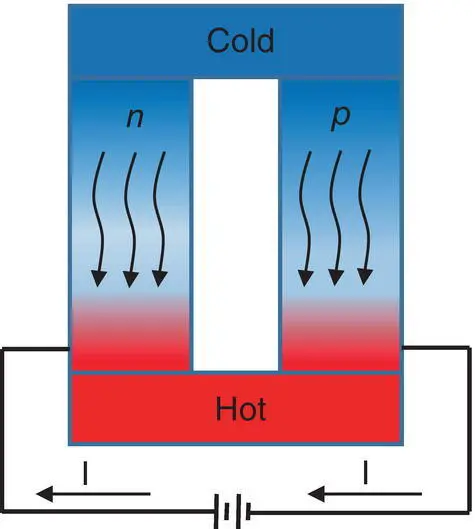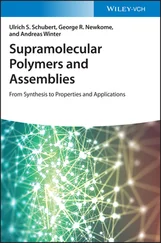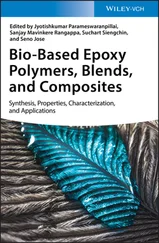(1.68) 
In terms of the Eq. (1.66), the m value corresponding to the maximum efficiency is
(1.69) 
where  is the mean operation temperature,
is the mean operation temperature,
(1.70) 
The maximum efficiency ( η max) is given by
(1.71) 
This equation is the same as the Eq. (1.32). This efficiency is always less than the Carnot efficiency ( η c),
(1.72) 
The Peltier effect can be used for thermoelectric cooling. The Peltier cooling principle is quite different from the conventional cooling technologies that usually use compressed liquid or gas. Because of the compressor and circuit fluid, the conventional cooling instruments like air conditioners and refrigerators are quite bulky, heavy, and noisy. No moving part is required for a Peltier cooler; it is thus quiet and can have a very small size.
As shown in Figure 1.24, when an electrical current passes through the thermoelectric legs, both the electrons in the n ‐type leg and holes in the p ‐type leg transport from the cold side to the hot side. The charge carriers bring heat from the cold side to the hot side and thus cool down the cold side. The heat pumped at the cold side is Π×I , where Π is the Peltier coefficient and I the current density. Π is related to the Seebeck coefficient by the Kelvin relationship, Π = S ×T.
Apart from the Peltier cooling, Joule heat is generated by the electrical current, and heat is transferred from the hot side to the cold side due to the temperature gradient. Half of the overall Joule heat transports to the cold side or the hot side. By neglecting the Thomson effect, the heat absorption at the cold side of a thermoelectric leg is given by
(1.73) 

Figure 1.24 Schematic illustration of thermoelectric cooling. An external electricity source is connected to the two legs, and electrical current flows from the n ‐type leg to the p ‐type leg. The curved arrows indicate the transportation of the charge carriers from the cold side to the hot side in the thermoelectric legs.
where R is the electrical resistance of the thermoelectric leg, K the thermal conductance of the thermoelectric material, and Δ T = T H− T C.
The input power by the electricity includes the heat pumping and the Joule heat,
(1.74) 
The ratio of the heat absorbed at the cold side to the input electrical power is the energy efficiency of cooling. It is called as the coefficient of performance (COP),
(1.75) 
As shown in Eq. (1.73), the rate of heat pumping is a quadratic equation of the current I . There is a maximum rate of heat pumping. The corresponding current at the maximum heat pumping rate is given by
(1.76) 
At this maximum cooling rate, the corresponding COP is given by
(1.77) 
The electrical current at the maximum cooling rate is different from that corresponds to the maximum COP. The electrical current corresponding to the maximum COP is given by
(1.78) 
The maximum COP is shown by the Eq. (1.79),
(1.79) 
The maximum temperature difference between the hot and cold sides is given by
(1.80) 
This indicates that thermoelectric materials with a high Z value are needed for efficient thermoelectric cooling. When the Z value is higher, lower temperature at the cold side can be achieved.
1.4 Thermoelectric Sensors
The Seebeck effect can be used to measure the temperature difference between two objects. One example is the thermocouples used for high temperature measurement. One end of a thermocouple is put to an object of constant temperature. The temperature of the other end can be read in terms of the Seebeck voltage.
Thermoelectric materials can be used for the direct energy conversion between heat and electricity. Apart from inorganic semiconductors and metals, intrinsically conducting polymers and organic molecules and composites of nanomaterials have also gained great attention. The ZT value is the parameter to characterize thermoelectric materials. A high ZT value requires high Seebeck coefficient, high electrical conductivity, but low thermal conductivity. Inorganic thermoelectric materials usually have a high Seebeck coefficient. But their thermal conductivity is very high. Organic or polymeric thermoelectric materials usually have a low thermal conductivity. But their Seebeck coefficient is lower than their inorganic counterparts by one to two orders of magnitude. The energy band structure and doping mechanism of conducting polymers is fundamentally different from metals or inorganic semiconductors. Thus, the approaches to improve the thermoelectric properties of conducting polymers can be quite different from that of inorganic thermoelectric materials as well. The thermoelectric properties of composites depend on the structure and properties of the fillers and the matrix and the microstructure of the composites. In‐depth understanding of the thermoelectric fundamental knowledge is the key for the development of high‐performance thermoelectric materials.
Читать дальше



 is the mean operation temperature,
is the mean operation temperature,






















